Abstract
Recent reports of the isolation of microorganisms from used soap bars have raised the concern that bacteria may be transferred from contaminated soap bars during handwashing. Since only one study addressing this question has been published, we developed an additional procedure to test this concern. In our new method prewashed and softened commercial deodorant soap bars (0.8% triclocarban) not active against Gram-negative bacteria were inoculated with Escherichia coli and Pseudomonas aeruginosa to give mean total survival levels of 4.4 X 10(5) c.f.u. per bar which was 70-fold higher than those reported on used soap bars. Sixteen panelists were instructed to wash with the inoculated bars using their normal handwashing procedure. After washing, none of the 16 panelists had detectable levels of either test bacterium on their hands. Thus, the results obtained using our new method were in complete agreement with those obtained with the previously published method even though the two methods differ in a number of procedural aspects. These findings, along with other published reports, show that little hazard exists in routine handwashing with previously used soap bars and support the frequent use of soap and water for handwashing to prevent the spread of disease.
Full text
PDF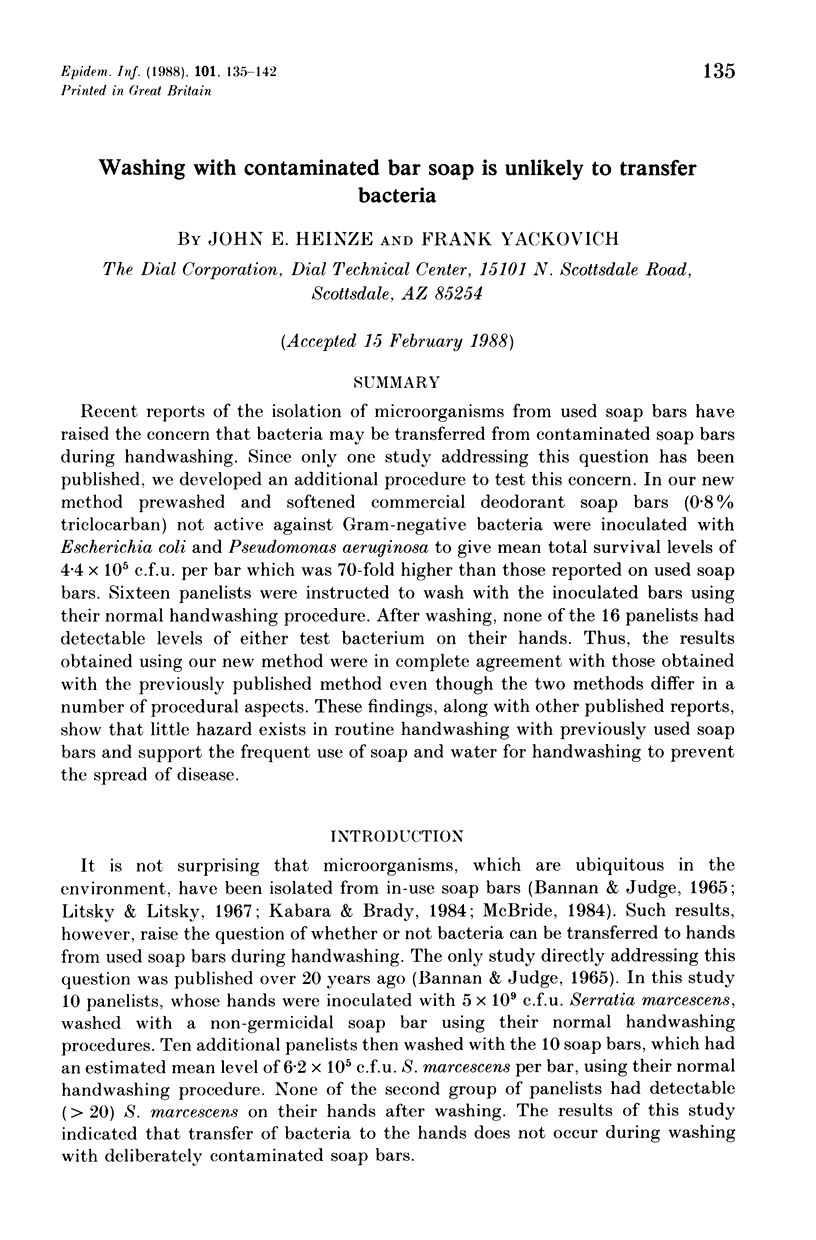

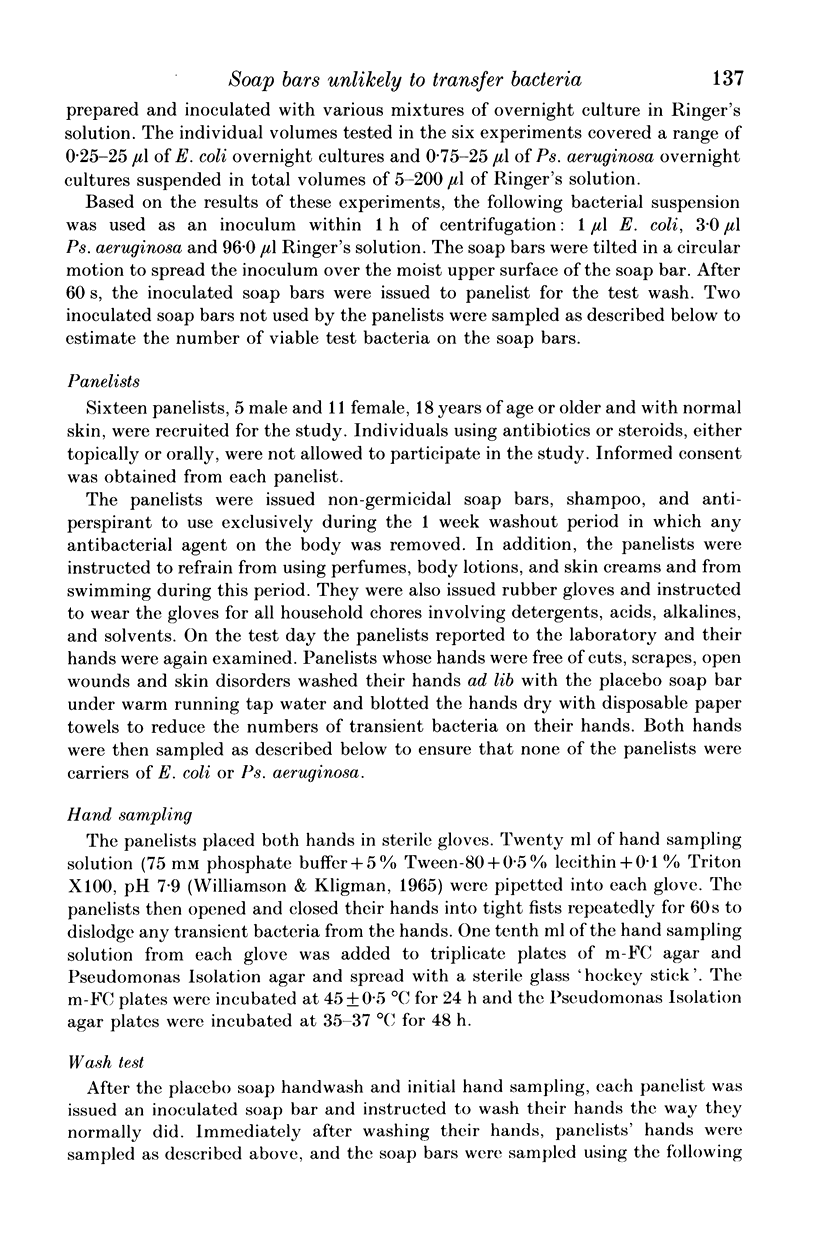
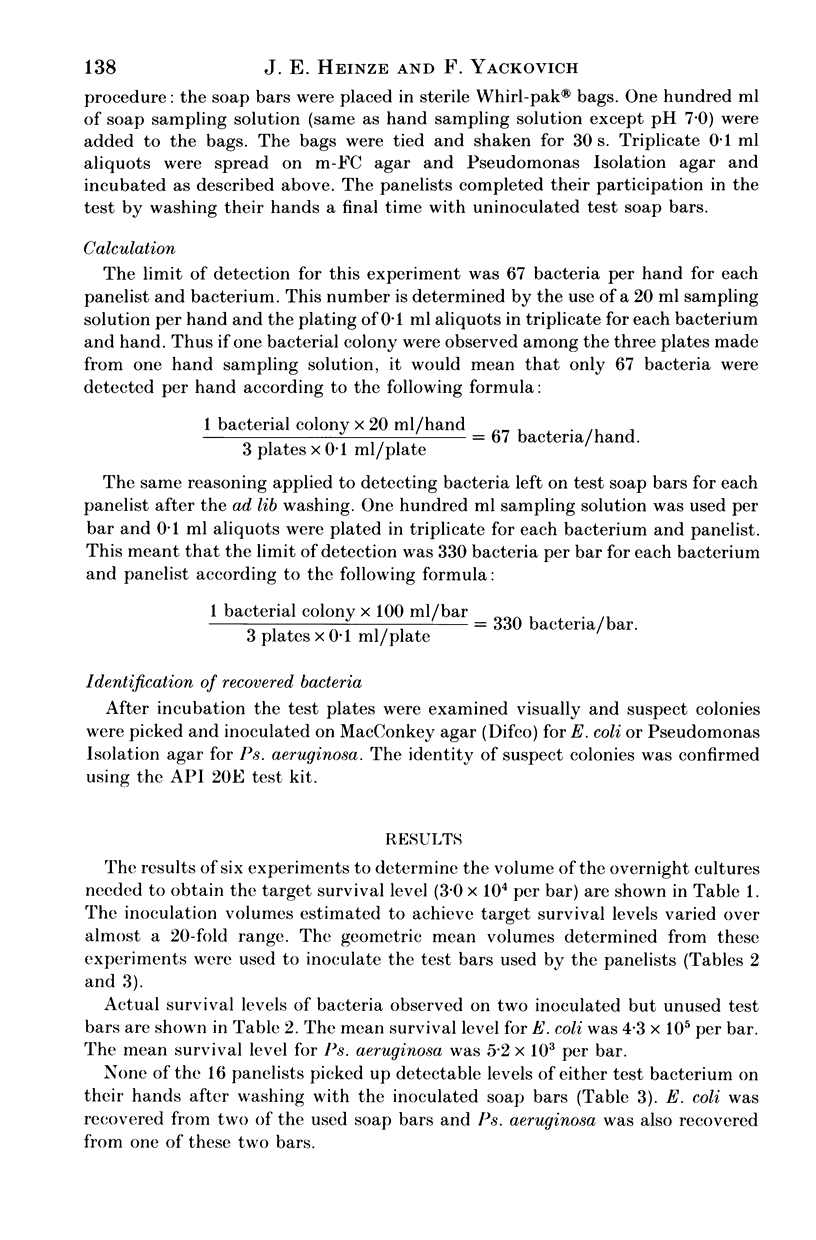
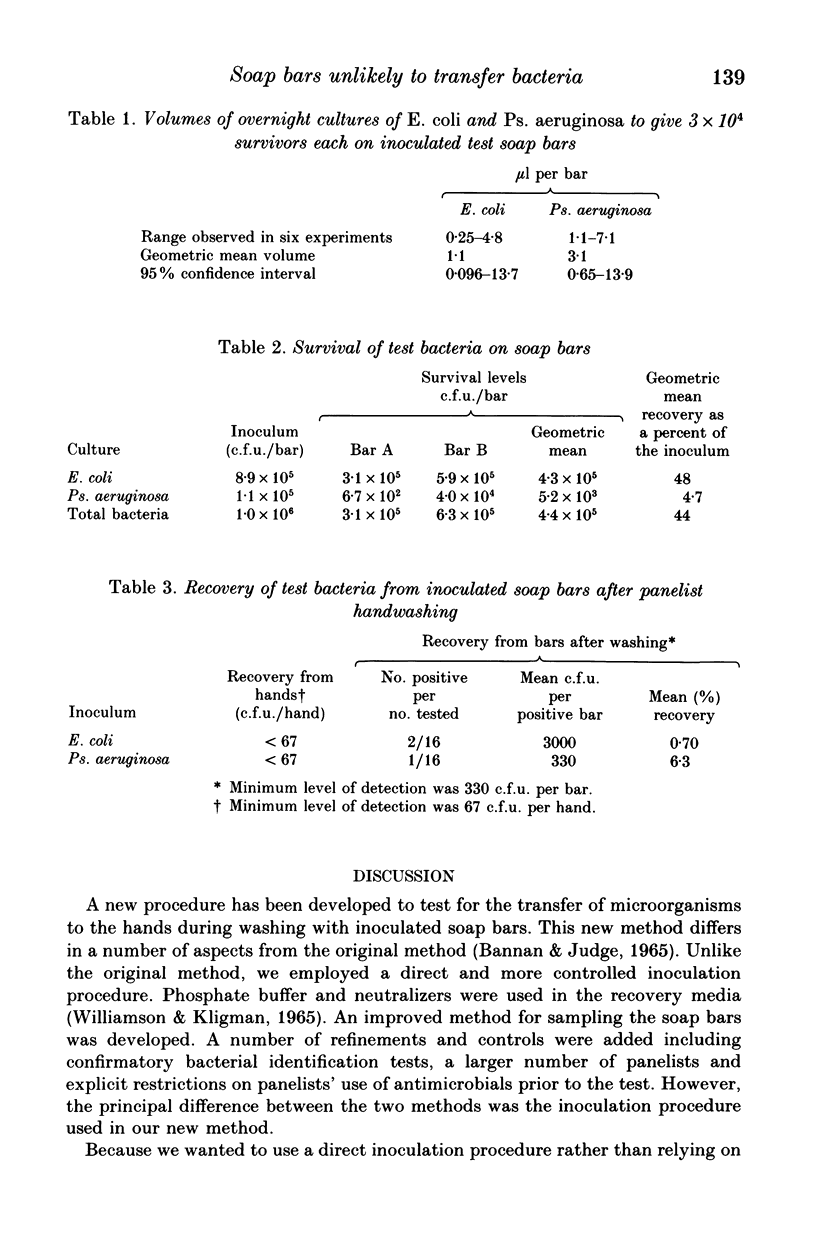
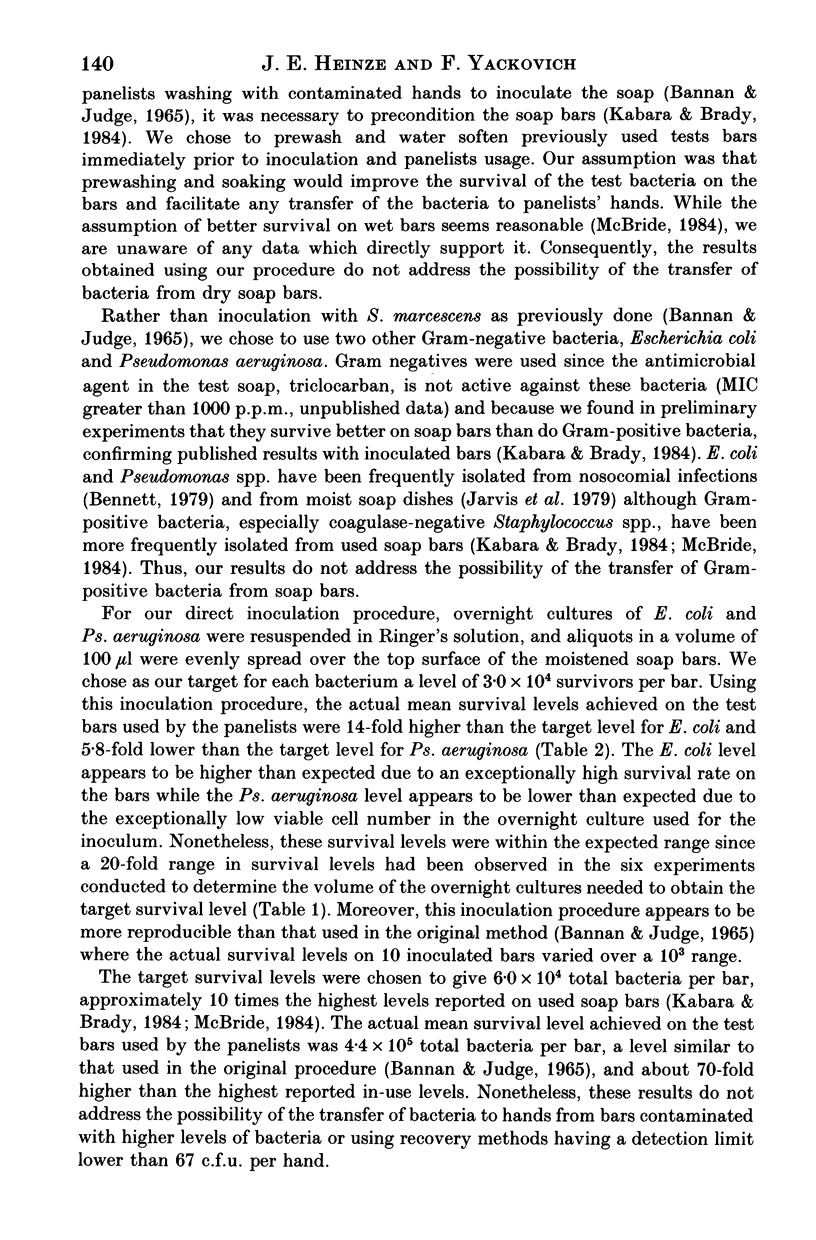
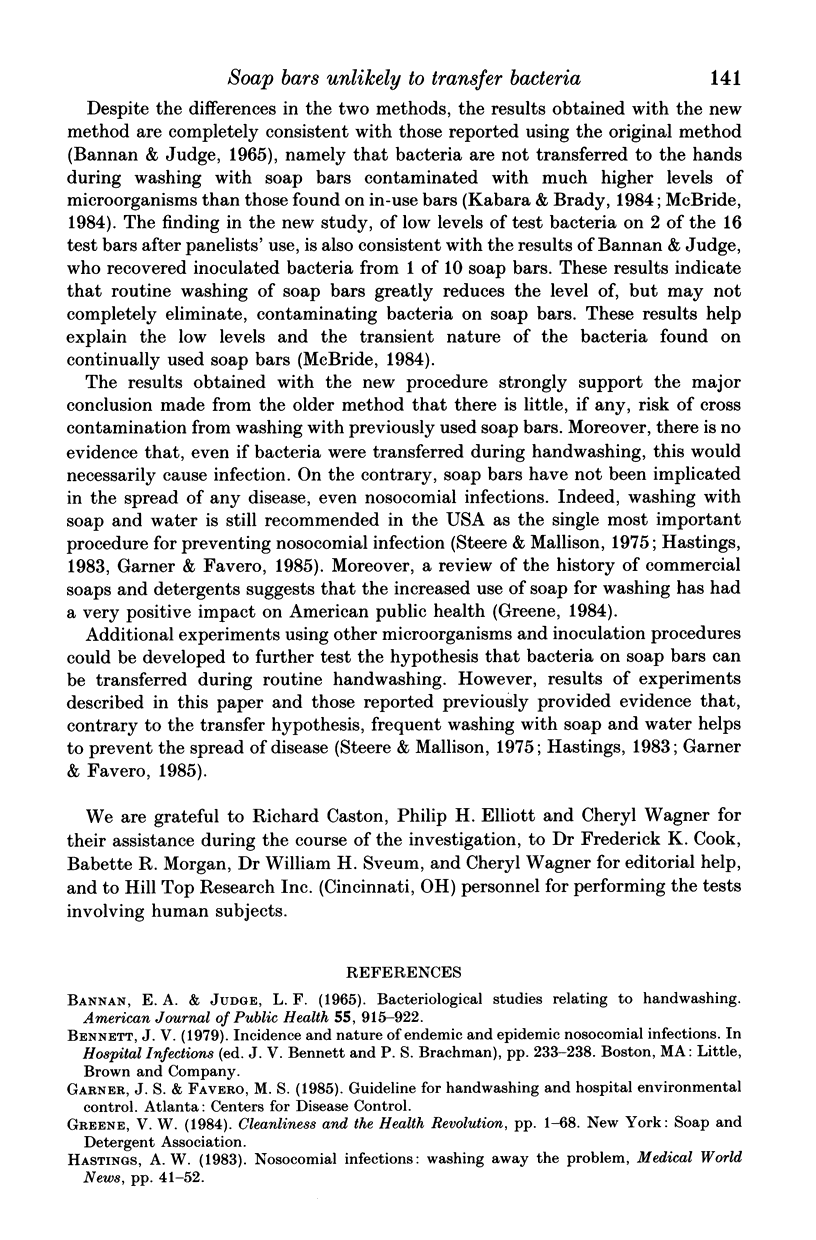

Selected References
These references are in PubMed. This may not be the complete list of references from this article.
- BANNAN E. A., JUDGE L. F. BACTERIOLOGICAL STUDIES RELATING TO HANDWASHING. 1. THE INABILITY OF SOAP BARS TO TRANSMIT BACTERIA. Am J Public Health Nations Health. 1965 Jun;55:915–922. doi: 10.2105/ajph.55.6.915. [DOI] [PMC free article] [PubMed] [Google Scholar]
- Blood flow sensor developed; rate of flow of blood related to electrical conductivity. Hosp Manage. 1967 Feb;103(2):74–75. [PubMed] [Google Scholar]
- Hastings A. W. Nosocomial infections: washing away the problem. Med World News. 1983 Sep 26;24(18):41, 44-5, 49-52. [PubMed] [Google Scholar]
- Jarvis J. D., Wynne C. D., Enwright L., Williams J. D. Handwashing and antiseptic-containing soaps in hospital. J Clin Pathol. 1979 Jul;32(7):732–737. doi: 10.1136/jcp.32.7.732. [DOI] [PMC free article] [PubMed] [Google Scholar]
- Kabara J. J. Bar soap and liquid soap. JAMA. 1985 Mar 15;253(11):1560–1561. doi: 10.1001/jama.1985.03350350054017. [DOI] [PubMed] [Google Scholar]
- Kabara J. J., Brady M. B. Contamination of bar soaps under "in-use" conditions. J Environ Pathol Toxicol Oncol. 1984 Jul;5(4-5):1–14. [PubMed] [Google Scholar]
- McBride M. E. Microbial flora of in-use soap products. Appl Environ Microbiol. 1984 Aug;48(2):338–341. doi: 10.1128/aem.48.2.338-341.1984. [DOI] [PMC free article] [PubMed] [Google Scholar]
- Steere A. C., Mallison G. F. Handwashing practices for the prevention of nosocomial infections. Ann Intern Med. 1975 Nov;83(5):683–690. doi: 10.7326/0003-4819-83-5-683. [DOI] [PubMed] [Google Scholar]
- Williamson P., Kligman A. M. A new method for the quantitative investigation of cutaneous bacteria. J Invest Dermatol. 1965 Dec;45(6):498–503. doi: 10.1038/jid.1965.164. [DOI] [PubMed] [Google Scholar]


